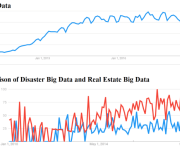Cloud Vulnerability Management: What It Is, Features, Vulnerabilities, and More
Cloud Vulnerability Management is about finding, judging and improving security risks in systems that use cloud technology. It is important to have a robust Cloud Vulnerability Management program in place to protect your organization’s data and systems. In this article, we will discuss the important features of Cloud Vulnerability Management, common vulnerabilities in cloud-based systems and the best practices for cloud vulnerability management.
What is Cloud Vulnerability Management?
The process of identifying, reporting, and fixing security risks in cloud platforms is called cloud vulnerability management, and it’s crucial for ensuring data safety. A responsible cloud vulnerability management system must be put into place to maintain a secure happy medium between users’ access to information while protecting against any possible malicious actors. It is important to have a robust Cloud Vulnerability Management program in place to protect your organization’s data and systems.
Important Features of Cloud Vulnerability Management
There are several characteristics of cloud vulnerability management that make it an important tool for protecting your reputation and, more significantly, the data of your customers. Here are some of those key features:
Better Security
To protect the cloud platform, apps that use it, and data that is stored and transmitted by them, administrators employ cloud vulnerability scanning to ensure improved security.
Vulnerability management is the practice of monitoring your applications and data in order to keep them secure and identify any flaws that may be fixed immediately.
Cost-Effective
Having a good cloud vulnerability management procedure in place means the platform and data stored on it are constantly monitored for any new security flaws.
Quick detection and remediation of these flaws mean that less time and money will be spent on fixing the vulnerabilities and recovering from any exploitation.
Highly Preventative
Organizations use vulnerability management to find and fix security holes before attackers can take advantage of them. By continuously monitoring for flaws 24/7, vulnerability management can help prevent many attacks directed at sensitive data and applications.
Time-Saving
If an application and the data it contains aren’t being watched, attackers may try to get access to it by any means available. This might result in wasted time repairing the consequences of such exploits instead of focusing on the actual vulnerabilities. Having competent cloud vulnerability management is beneficial here since it saves time and money while also maintaining security.
Common Vulnerabilities in Cloud
Before examining the features of a cloud vulnerability management system, it is crucial to understand the various types of cloud-based vulnerabilities and how to avoid any potential breaches or other issues. The most frequent cloud-based vulnerabilities are:
Misconfigurations
Mismatches in configurations are one of the most common causes of cloud platform data breaches. Misconfigurations imply any flaws or gaps in security procedures that might leave valuable information unprotected.
Not having adequate access controls in place can result in individuals gaining entry to sensitive data and programs, putting the entire system at risk. It’s possible that you’ve come across a misconfigured computer recently. This may include a lack of appropriate access management or even security group mistakes. Individuals without authorized access might be able to gain entry to any portion of information or applications if there aren’t sufficient restrictions in place.
Data Loss or Theft
The simplicity of cloud platforms’ storage requirements, which tempt customers to rely on the cloud rather than physical servers, is a major benefit and disadvantage. Because data transmission and storage are conducted off-premises in the cloud, they are vulnerable to a wide range of cyberattacks, some of which may result in the loss of critical information.
Data theft may result in a wide range of sensitive information being exposed, including their IP address, which is a significant portion of the data kept. The following are a few of the causes of data loss: Data deletion, lack of access, and change are all examples. Data elimination and modification might result in significant amounts of essential information being lost or modified, which can have a severely detrimental impact on an organization’s operations.
Non-Compliance
Every sector and organization working in it must comply with industry-specific norms and laws. This is referred to as compliance. PCI-DSS, HIPAA, ISO 27001, SOC 2, and other important compliance standards are just a few examples of critical compliance standards.
The auditors generally concentrate on data security and evaluate each firm’s efforts to follow and maintain the rules. As a result, the company is solid in terms of ensuring security, all access controls and limitations are effective and suitable, and data protection is maintained.
Weak Access Management
Some of the most common security threats in cloud computing are weak or nonexistent access controls. This allows unauthorized individuals to view data they’re not supposed to have access to.
Adequate access controls make sure that only people allowed to see certain data, documents, and applications can view them. Authorization is the procedure of determining who is eligible for access and who isn’t.
There are several safety risks associated with poor access management, including not having role-based access control, disabling access for inactive users or former employees, and multiple sign-in accounts.
Vulnerable APIs
APIs had previously been given less concern in terms of security. However, with attackers targeting APIs to gain access to valuable data, APIs’ security needed to be improved as well.
API’s play an integral role in making data more accessible and efficient for both cloud computing and applications. Insecure APIs however can be dangerous as they can create opportunities for exploitation.
Without authentication and authorization measures in place, APIs are left highly vulnerable to attack. They are therefore vulnerable to cybercriminals and other internet users who can then utilize them to gain access to critical data.
Best Practices for Cloud Vulnerability Management
Comprehensive Vulnerability Scanning
A helpful way to manage vulnerabilities in the cloud is by using a comprehensive vulnerability scanner. This type of scanner should be able to run scans continuously and pick up on even small vulnerabilities.
It should also include a large vulnerability database so that all vulnerabilities are correctly evaluated. A decent scanner should be able to perform behind-the-login scans, identify logical errors, eliminate any false positives, and ensure that no false negatives occur.
Ensure Integration
Integration of vulnerability scanning into the development process allows for on-demand scanning to identify security flaws as the application develops. Cloud service providers may be continuously compliant with stringent regulatory requirements such as GDPR, ISO 27001, HIPAA, and PCI-DSS by integrating vulnerability scanning into their development processes.
Regular Pentests
One of the most effective methods for managing cloud security risks is conducting regular pentests. They go one step further than simply scanning for vulnerabilities by using discovered flaws to evaluate the potential impact of an attack in real life.
During compliance inspections, continuous pentesting and scanning are frequently seen as necessary since they assist businesses in finding and closing security flaws.
Vulnerability Prioritization
By singling out which vulnerabilities are the most critical, you can figure out which ones need to be addressed immediately as opposed to those that pose a lower risk and therefore can be mitigated or left untouched.
Conclusion
Cloud vulnerability management is vital for any organization that uses cloud services. By using vulnerability scanning services, conducting regular pentests, and prioritizing vulnerabilities, organizations can reduce the risk of data breaches and other security threats. Best practices for cloud vulnerability management should be continuously followed in order to keep data safe and secure. Thanks for reading!
Author Bio: Ankit Pahuja is the Marketing Lead & Evangelist at Astra Security. Ever since his adulthood (literally, he was 20 years old), he began finding vulnerabilities in websites & network infrastructures. Starting his professional career as a software engineer at one of the unicorns enables him in bringing “engineering in marketing” to reality. Working actively in the cybersecurity space for more than 2 years makes him the perfect T-shaped marketing professional. Ankit is an avid speaker in the security space and has delivered various talks in top companies, early-age startups, and online events. You can follow him on LinkedIn.

























